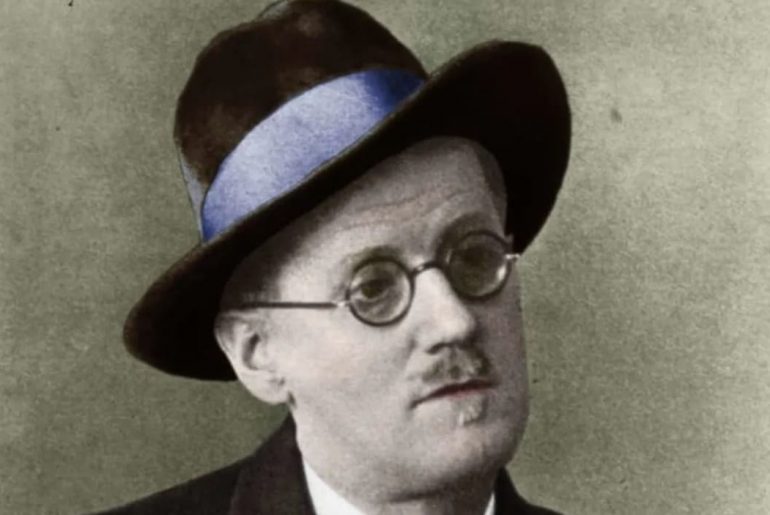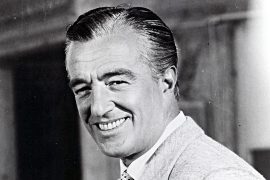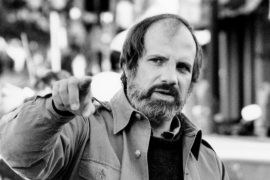With the novel “Ulysses” (1922), the Anglo-Irish writer created the most radical translation of Homer’s “Odyssey” and one of the most important novels of the modern age, which also established his reputation as a literary genius. His psychologically differentiated portrayal and his innovative literary techniques made him the most important author in the language and time of the 20th century alongside Marcel Proust and Robert Musil. In his work, James Joyce dealt with symbolism and realism, which he later combined in a synthesis. Joyce worked with experimental language and the development of the so-called “stream-of-consciousness technique” (stream of consciousness technique or simultaneous style)…
James Augustine Aloysius Joyce was born in Dublin on February 2, 1882.
Raised in poverty as the first child of John Stanislaus Joyce and Mary Jane Murray, his parents wanted him to become a priest. He therefore attended several Jesuit schools before studying philosophy and languages at University College Dublin. Then he turned away from the Roman Catholic Church. Under the pretext of wanting to study medicine and natural sciences, he moved to Paris in 1902. Here he first came into contact with the literature of symbolism and realism, but soon got into financial difficulties, so that he returned to Dublin in 1903. Here he first worked as a private tutor.
In 1904 he met Nora Barnacle, whom he married in London on July 4, 1931. Together they became parents to two children, George (1905-1976) and Lucia (1907-1982). The family then lived in Pula, Trieste, Zurich, Paris and London. Meanwhile, Joyce earned his living with various jobs, including as a journalist and language teacher at Berlitz schools. In 1913 he met the writer Ezra Pound (1885-1972). Joyce’s literary work consisted of only a few books and a few poems. Harriet Shaw Weaver became one of the most important patrons in those years. He was also dependent on the financial support of his brother Stanislaus.
The novel “Ulysses” (1922) then established his reputation as a literary genius. The title was the most radical translation of the Homeric “Odyssey” in the language and time of the 20th century. His labyrinthine novels contained different levels of relationships, which revealed several principles. Each episode has been assigned a body organ, a symbol, and a science. The novel was ostensibly the epic of his native Dublin on June 16, 1904, the day he met Nora Barnacle. Joyce fans later celebrated this day as “Bloomsday”.
Even before his work was published, the novel was banned in England, Ireland and the USA due to obscenities. The owner of the Shakespeare & Co. bookshop, Sylvia Beach, published a first censored edition in the same year. The first complete edition was not published until 1958, posthumously. In his second significant novel success “Finnegans Wake” (1923) he tried to describe a dreamed world history in a conglomerate of different languages. Almost blind due to his eye disease, he underwent eye surgery in 1930. In 1939 the first complete version of his novel Finnegans Wake was published.
After the occupation of France in World War II, Joyce moved back to Zurich with his family in 1940.
James Joyce died on January 13, 1941 at the age of 58 in Zurich as a result of a perforated intestine.
What is James Joyce most famous for?
James Joyce is known for his experimental use of language and exploration of new literary methods, including interior monologue, use of a complex network of symbolic parallels, and invented words, puns, and allusions in his novels, especially Ulysses (1922) and Finnegans Wake (1939).
Where was James Joyce from?
Rathgar, is a suburb of Dublin in Ireland. It was originally a village which from 1862 was part of the township of Rathmines and Rathgar; it was absorbed by the growing city and became a suburb in 1930. It lies about three kilometres south of the city centre.
What disease did James Joyce suffer from?
Joyce developed iritis and had frequent episodes with conjunctivitis, glaucoma, episcleritis, synechia and cataracts. Attacks left him writhing on the floor, needing opiates for relief. Various treatments, including cocaine injections and leeches, were tried.
Was James Joyce Catholic or Protestant?
oyce is said to have described the Catholic Church as “here comes everybody.” And while he often pulled himself out of its embrace, his work made frequent forays into Catholic life.
What was James Joyce’s religion?
Born into an Irish Catholic family, Joyce was baptised and confirmed Roman Catholic as a child and educated in Roman Catholic schools until he attended university. Joyce’s decision, as a young man, to leave the Church and the faith of his childhood was an important step in his development as a writer.
What is James Joyce’s most famous book?
Ulysses
1920
Dubliners
1914
Finnegans Wake
1939
The Dead
1914
Araby
1914
Did James Joyce have children?
Lucia Joyce
Giorgio Joyce
How does james joyce compare to shakespeare, dickens?
James Joyce is known for his experimental use of language and exploration of new literary methods, including interior monologue, use of a complex network of symbolic parallels, and invented words, puns, and allusions in his novels, especially Ulysses (1922) and Finnegans Wake (1939).





